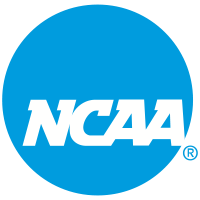Ignatius L Hoops
Well-known member
- Joined
- Sep 9, 2015
- Messages
- 10,923
- Reaction score
- 3,759
- Points
- 113
PROP approves change to ice hockey overtime format
The NCAA Playing Rules Oversight Panel approved changes to the overtime format in men’s and women’s ice hockey, starting with the 2020-21 academic year. Under the
 www.ncaa.org
www.ncaa.org
Changes to OT, faceoffs and handshakes; plus, the shootout "spin-o-rama" is eliminated:
The NCAA Playing Rules Oversight Panel approved changes to the overtime format in men’s and women’s ice hockey, starting with the 2020-21 academic year.
Under the new rule, all teams tied at the end of regulation will play a five-minute, 3-on-3 sudden-victory overtime period to decide a winner. If neither team scores, a three-person shootout could be used in conference games or in-season tournaments for advancement purposes.
The “spin-o-rama” move, where the player with the puck completes a 360-degree turn while approaching the goal, will not be allowed.
In regular-season nonconference games that go into overtime, teams are required to play a five-minute, 3-on-3 sudden-victory period. If neither team scores, the result of the game would be a tie.
Finding a way to align NCAA ice hockey overtime rules with those of other hockey leagues has been a thoroughly debated topic in recent years. Once again, NCAA Men’s and Women’s Ice Hockey Rules Committee members had comprehensive discussions before deciding on this proposal.
Faceoffs
The panel approved allowing teams to choose which faceoff circle the puck would be dropped in at the start of a power play or after icing violations.
The panel also approved allowing officials to issue a warning on faceoff violations instead of ejecting the center. If a second violation by the same team occurs during the same faceoff, a two-minute, bench-minor penalty for delay of game will be called.
Committee members think this will speed up the pace of play.
Handshakes
While it remains committed to sportsmanship, the Men’s and Women’s Ice Hockey Rules Committee voted to remove the rule that required team members to shake hands after a game.
Committee members think it is best for conferences or schools to decide postgame sportsmanship protocols rather than for a national rule to establish the only postgame sportsmanship protocol.
